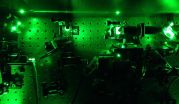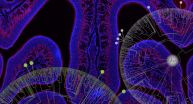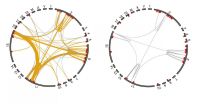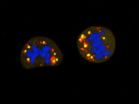(Press-News.org) A bill to improve the nutritional value of fast food restaurant meals marketed to children--like McDonald's Happy Meals--could have a wide enough impact to reduce calories, fat, and sodium, according to a new study led by researchers at NYU Langone Medical Center.
The study, which will publish in the American Journal of Preventive Medicine online on August 31, includes collaboration from NYU College of Global Public Health, NYU Wagner Graduate School of Public Service, and NYU Steinhardt School of Culture, Education, and Human Development.
The "Healthy Happy Meals" Bill, proposed by New York City Council member Benjamin J. Kallos, who represents the Upper East Side of Manhattan and Roosevelt Island, would require that fast food meals marketed to kids using toys or other promotional items include a serving of fruit, vegetables or whole grain. They must also be limited to 500 calories or less, with fewer than 35 percent of calories coming from fat, fewer than 10 percent coming from saturated fat, fewer than 10 percent from added sugars, and fewer than 600 milligrams of sodium. The bill is currently being considered by the City Council, and is similar to legislation recently enacted in California
To identify whether the bill might make a public health impact on nutrition improvement and number of children reached, the researchers analyzed receipts collected in 2013 and 2014 from 358 adults, which included purchases for 422 children at multiple New York City and New Jersey locations of Burger King, McDonald's, and Wendy's, three fast food chains that market kids' meals.
Adults purchased on average 600 calories for each child, with 36 percent of those calories coming from fat, according to the findings. Over one-third of children ordered kids' meals, and 98 percent of kids' meals did not meet the nutritional criteria outlined in the proposed legislation.
If kids' meals meet the bill's criteria and children's orders do not shift, there would be a 9 percent drop in calories--representing 54 fewer calories--a 10 percent drop in sodium, and a 10 percent drop in percentage of calories from fat.
"While 54 calories at a given meal is a small reduction, small changes that affect a wide number of people can make a large impact," said Brian Elbel, PhD, lead author and associate professor in the Departments of Population Health at NYU Langone and at NYU Wagner. "Passing the bill could be a step in the right direction, though no single policy can singlehandedly eliminate childhood obesity."
"The policy's effectiveness will depend on whether the food industry attempts to neutralize it through marketing or other strategies," said Marie Bragg, PhD, co-author and assistant professor in the Department of Population Health at NYU Langone and at the NYU College of Global Public Health. "For example, the industry could remove children's meals altogether, forcing children to order the larger portions from the adult menu."
Dr. Bragg offered another approach: "Policymakers could consider broader restrictions on marketing, similar to legislation in Chile that banned any use of toy premiums in children's meals in 2012," she said.
INFORMATION:
Additional authors were Jonathan Cantor, MS, a PhD candidate at NYU Wagner and Tod Mijanovich, PhD, a research associate professor at NYU Steinhardt. This project was supported by grants from the National Institute of Diabetes and Digestive and Kidney Diseases (R01DK09924), the New York State Health Foundation (12-01682), and the Robert Wood Johnson Foundation (70823). The funders had no role in the design and conduct of the study; collection, management, analysis, and interpretation of the data; or preparation, review, or approval of the manuscript. The authors report no financial conflicts.
A team of scientists has successfully measured particles of light being "squeezed", in an experiment that had been written off in physics textbooks as impossible to observe.
Squeezing is a strange phenomenon of quantum physics. It creates a very specific form of light which is "low-noise" and is potentially useful in technology designed to pick up faint signals, such as the detection of gravitational waves.
The standard approach to squeezing light involves firing an intense laser beam at a material, usually a non-linear crystal, which produces the desired effect.
For ...
In animals, numerous behaviors are governed by the olfactory perception of their surrounding world. Whether originating in the nose of a mammal or the antennas of an insect, perception results from the combined activation of multiple receptors located in these organs. Identifying the full repertoire of receptors stimulated by a given odorant would represent a key step in deciphering the code that mediates these behaviors. To this end, a tool that provides a complete olfactory receptor signature corresponding to any specific smell was developed in the Faculties of Science ...
Researchers at the Babraham Institute have discovered a strong physical gene interaction network that is responsible for holding genes in a silencing grip during early development. In the same way that people can interact with others in close proximity, say within the same room, or others millions of miles apart, there are also short- and long-range interactions within the genome forming a three-dimensional configuration where different parts of the genome come into contact with each other. The research, reported online in Nature Genetics, presents how key decision-making ...
Outpatient human immunodeficiency virus (HIV) health care facilities funded by the federal Ryan White HIV/AIDS Program (RWHAP) were more likely to provide case management, mental health, substance abuse and other support services than those facilities not funded by the program, according to an article published online by JAMA Internal Medicine.
RWHAP was established in 1990 to provide funds to states, metropolitan areas and clinics to increase access to high-quality HIV care and treatment for low-income, uninsured and underinsured individuals and families affected by ...
Religious or spiritual considerations were discussed in 16 percent of family meetings in intensive care units and health care professionals only rarely explored the patient's or family's religious or spiritual ideas, according to an article published online by JAMA Internal Medicine.
Understanding how frequently discussions of spiritual concerns take place - and what characterizes them - is a first step toward clarity regarding best practices of responding to spiritual concerns in advanced illness.
Douglas B. White, M.D., M.A.S., of the University of Pittsburgh School ...
Women with multiple sclerosis (MS) who intended to breastfeed their infants exclusively for two months had a lower risk of relapse during the first six months after giving birth compared with women who did not breastfeed exclusively , according to an article published online by JAMA Neurology.
About 20 percent to 30 percent of women with MS experience a relapse within the first three to four months after giving birth and there are no interventions for effective prevention of postpartum relapse. The effect of exclusive breastfeeding on postpartum risk of MS relapse is ...
It was long believed that acquired immunity--a type of immunity mediated by T- and B-cells--had memory, meaning that it could learn from new pathogens, making subsequent reactions more effective, whereas innate immunity--which is mediated by macrophages and other types of cells that react to certain molecules typically associated with pathogens--did not. However, it gradually became clear that things were not so simple. Plants and insects, which only have innate immunity, also seem to have immunological memory. Further, it has been reported that herpes virus infection increases ...
By changing the mouse model they use to study how the immune system responds to cancer, a team of researchers hopes to shift the focus for one emerging form of cancer immunotherapy back to the standard approach--relying on antigen-presenting dendritic cells--and away from the current upstart, macrophages.
Although macrophages, like dendritic cells, also take up antigens, they are more likely to degrade them than present them to T cells. The recent emphasis on macrophages stems, in part, from promising, but problematic, efforts to develop an effective macrophage-driven ...
Cancer cells become addicted to glucose, which they use as their regular source of energy to grow and develop. Although this was observed over nine decades ago by the German physiologist, Otto Warburg; there is still not therapeutic strategy today that can effectively take advantage of this special energy requirement. The initial approach appears to be simple: the lack of glucose could specifically induce the death of cancer cells.
A new study by the Spanish National Cancer Research Centre Cell and Cancer Unit, headed by the Cell Division and Cancer group of the Spanish ...
A UCSF-led team has developed a technique to build tiny models of human tissues, called organoids, more precisely than ever before using a process that turns human cells into a biological equivalent of LEGO bricks. These mini-tissues in a dish can be used to study how particular structural features of tissue affect normal growth or go awry in cancer. They could be used for therapeutic drug screening and to help teach researchers how to grow whole human organs.
The new technique -- called DNA Programmed Assembly of Cells (DPAC) and reported in the journal Nature Methods ...



